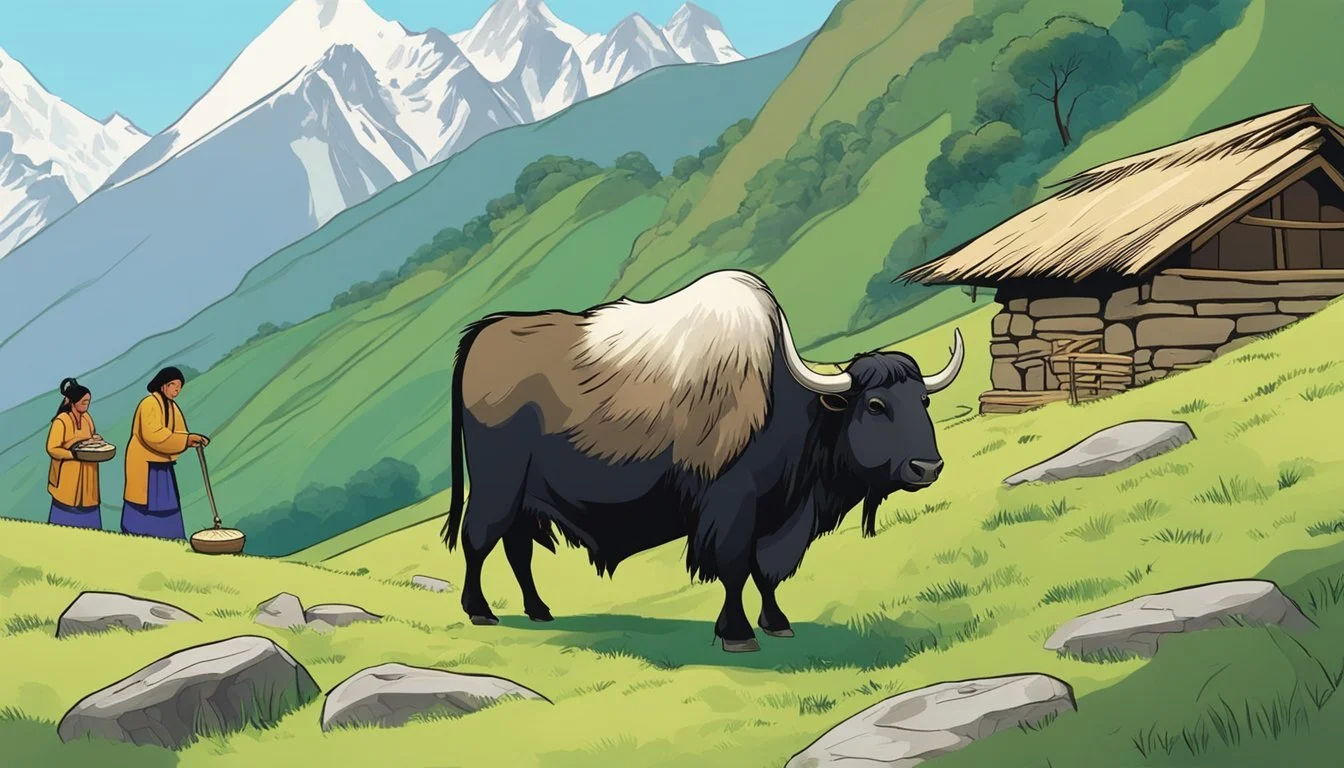Yak Cheese
Exploring the Unique Flavors of Himalayan Dairy Delicacies
Yak cheese (What wine goes well with cheese?) is a unique dairy product that originates from the high-altitude pastures of the Himalayas. This cheese is made from the milk of yaks, a bovine species well adapted to the cold, thin air of the mountainous region. The process of making yak cheese has been honed over generations by the indigenous people, often referred to as Brokpas, who have thrived in this challenging environment by utilizing the resources their sturdy yaks provide. Yak cheese is known for its rich taste and earthy flavors, (What wine goes well with earthy flavors?) which are a result of both the diet of the yaks and the traditional methods of cheese-making employed by the Brokpas.
In addition to being a staple in the local cuisine, yak cheese has garnered attention for its nutritional benefits. The milk used to produce the cheese is particularly high in fat content, providing essential energy needed to survive the harsh Himalayan conditions. These fats also play a critical role in facilitating the absorption of fat-soluble vitamins. Further, yak milk is a significant source of calcium and phosphorus, which are vital for maintaining bone health and muscle function.
Yak cheese comes in several forms, with one of the most notable being Chhurpi, which is renowned for its extraordinary hardness. The production of Chhurpi and other yak cheeses involves a meticulous process starting with the collection of yak milk, followed by curdling, separation of curds from whey, and a precise aging process. The resulting cheese is not only an indispensable part of Himalayan life but also an embodiment of the region's cultural heritage and symbiotic relationship with the land and its animals.
What Is Yak Cheese?
Yak cheese is a distinctive dairy product made from the milk of yaks native to the high altitudes and harsh climate of the Tibetan Plateau. It is revered for its rich flavor, nutritional qualities, and cultural significance among local communities.
Origins and History
Yak cheese traces its roots to the nomadic cultures of the Qinghai-Tibet Plateau, where yaks have been a staple for centuries. Nomads have relied on these hardy animals for transportation, dairy products like milk, butter, and cheese, and as a source of meat.
Production Process
The cheesemaking process begins with fresh yak milk which is allowed to curdle naturally. The curdling is followed by pressing to remove excess liquid and then aging to enhance its texture and flavor.
Types and Varieties
There are several types of yak cheese, such as the hard, cheddar-like Chhurpi, and others that vary in texture from dry and crumbly to soft and pliable. Aging carries an essential role in defining each variety's distinctive characteristics.
Nutritional Profile
Yak cheese is known for its high content of protein, fat, and essential vitamins and minerals, including calcium. It is relatively lower in lactose, making it a favorable option for those with lactose sensitivities.
Health Benefits
This cheese is attributed with antioxidant properties, and it is also considered to have antibacterial and anticancer benefits. Its high nutritional value may contribute to blood pressure-lowering and anti-fatigue effects.
Culinary Uses
In cuisine, yak cheese is savored for its unique flavor and is often enjoyed as a snack, used in soups, or employed in various other cooking methods, adding a distinctive taste to dishes.
Comparisons to Other Dairy Products
Yak cheese stands out next to dairy products from cows, sheep, or goats due to its richer taste and higher fat content, influenced by the yak's all-natural diet of wild meadows.
Sustainability and Organic Production
Yak cheese production supports sustainability and organic practices. Nomadic herders often follow traditional, environmentally friendly methods of raising yaks and producing cheese.
Preservation and Storage
The high altitude and cool climate of the Tibetan Plateau naturally facilitate the preservation and storage of yak cheese. Proper aging is crucial to develop its flavor and extend shelf life.
Challenges Facing Yak Cheese Production
Climate change and modernization pose challenges to traditional yak cheese production, which relies heavily on natural pastures and nomadic lifestyle.
Future of Yak Dairy Products
Continued research into the health benefits and nutritional value of yak cheese may elevate it from a local delicacy to a globally recognized functional food or dietary supplement.
Local Culture and Economy
Yak dairy products, including cheese, play an integral part in the economy of the Tibetan Plateau. They are a key local product and source of income for pastoralists.
Buying Tips and Authenticity
Seeking authentic yak cheese requires knowledge of its origins and characteristics. True yak cheese is often sourced from Kathmandu or directly from Tibetan producers, ensuring a local product with a traceable authenticity.



